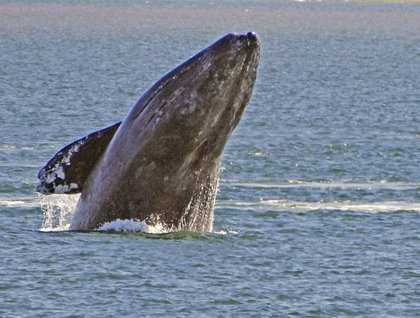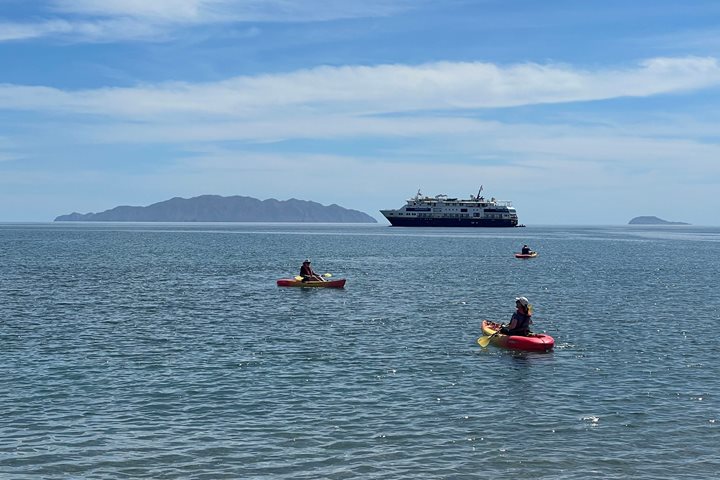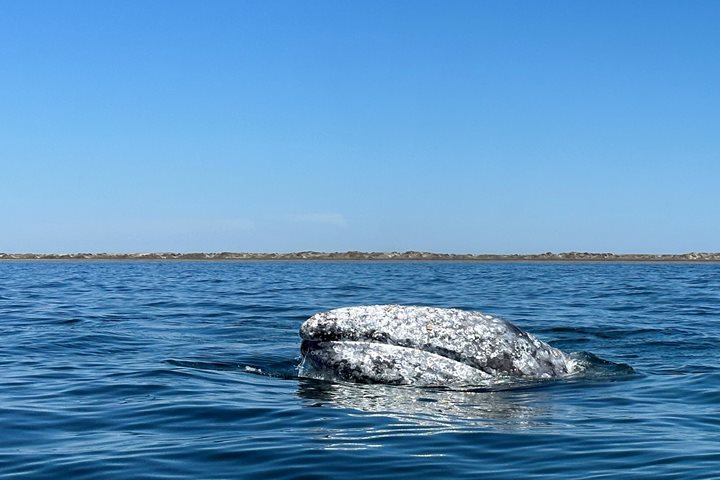Dawn broke as we motored north along the coast towards the entrance to Magdalena Bay and the adjacent waterways, our destination for the remainder of our voyage. Bright sunlight bathed the deep blue sea. As morning progressed, we spotted several sea lions, shearwaters, and now and then a sea turtle at the surface. Once we entered the mouth of the bay, an announcement came over the PA that the first gray whale of the trip was a short way ahead. Everyone flocked to the decks for a glimpse of this special creature.
A bank of thick fog then enveloped National Geographic Sea Bird, but before long it burned off to expose mangrove-lined shores and sand dunes sculpted by the wind. A local pilot boarded to maneuver the ship through a natural channel that is both narrow and very shallow in places. Frigatebirds circled overhead, masters of the air. A minus tide provided excellent conditions to view egrets, herons, ibises, and sandpipers foraging in the shallows. Bottlenose dolphins approached the ship and caught a free ride in the pressure wave at the bow. What fun to lean over the rail to see them weave back and forth just below us!
After passing the shallow segment of our route, the pilot departed and we began to see pairs of gray whale cows and their small calves. One breached multiple times near the stern. The officers and deckhands dropped the anchor near a lovely site where crescent-shaped dunes filled the landscape. We boarded our expedition landing craft for shuttles ashore to stretch our legs and wander or play in the fine sand. High dunes enticed the young and young at heart into leaping off the crests or sliding down the slopes with boogie boards.
Back on board our undersea specialist presented a talk on gray whales in preparation for tomorrow’s adventures, and following dinner we dimmed the ship’s lights for a chance to enjoy the moon and a star-studded sky.






